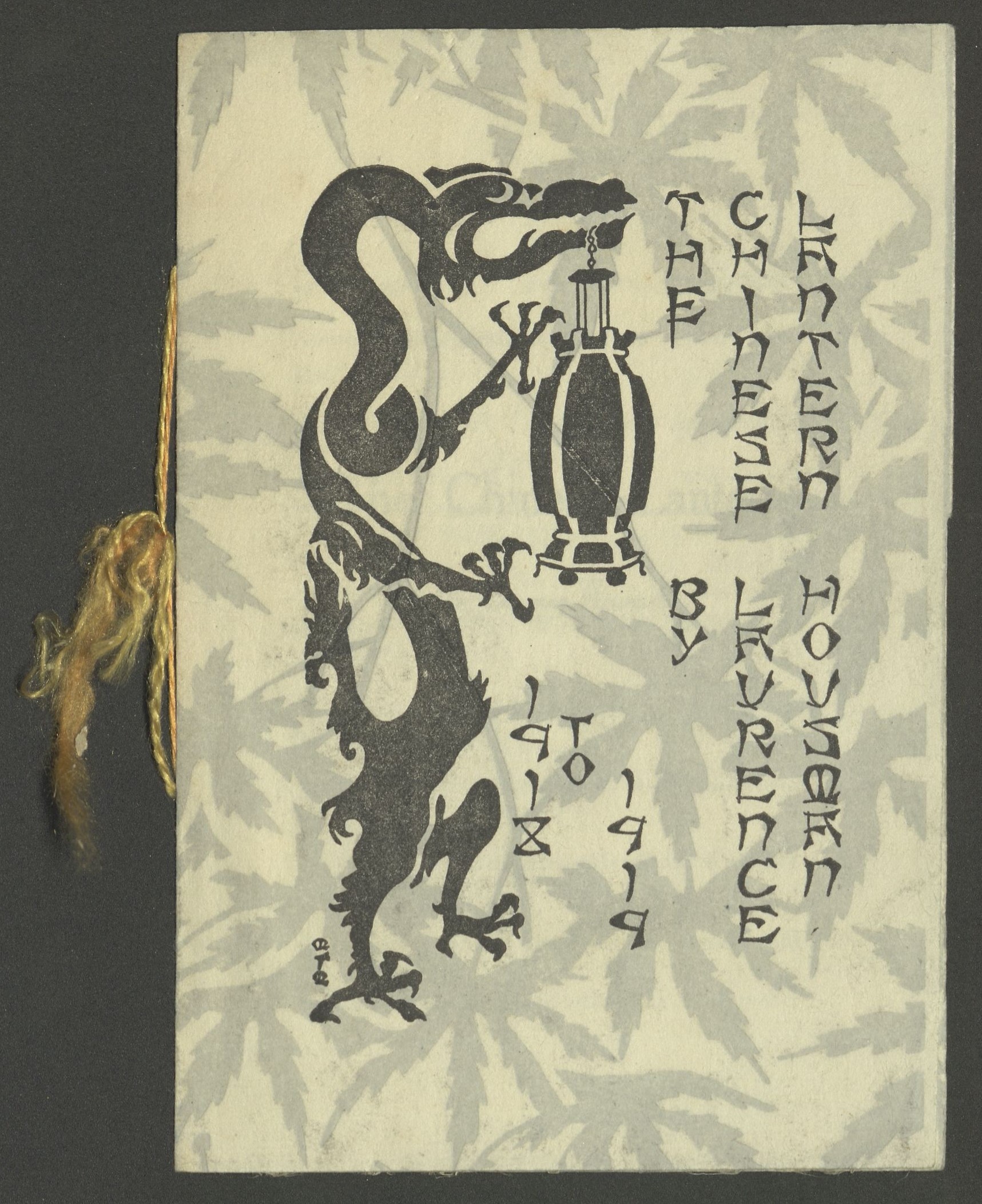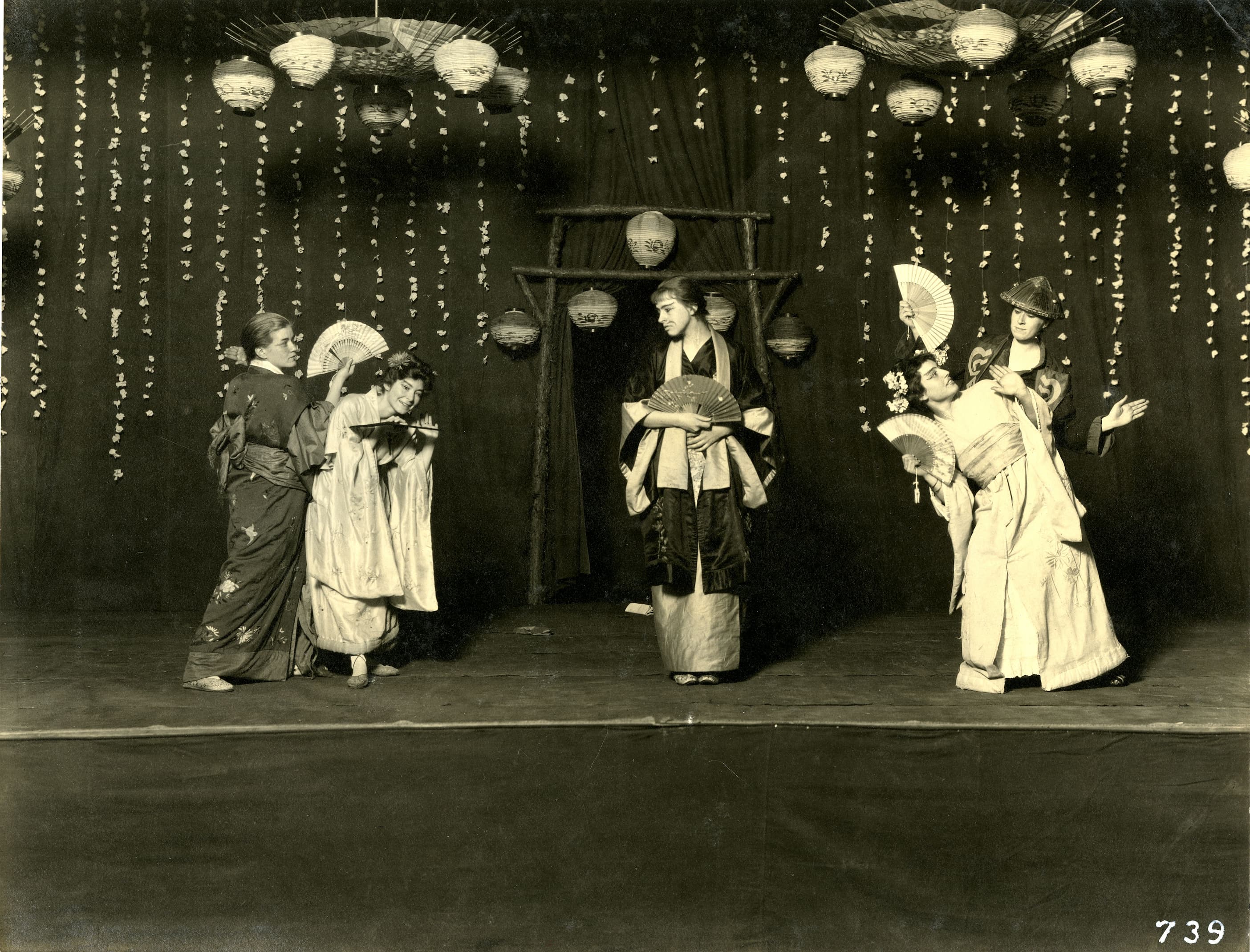Yellowface on Campus
Student plays, important to early campus culture, reflected prevailing social norms, which were grounded in social exclusion, elitism, and notions of racial superiority. Both The Chinese Lantern (1908) and The Mikado (1885) feature Asian characters with intentionally distorted names meant to highlight their foreignness and dialogue meant to mock Chinese and Japanese accents. These plays were performed for the student body in 1915 and 1916, in the years leading up to Liu Fung Kei’s arrival, and when Fujita Taki, the seventh recipient of the Japanese Scholarship, was on campus. The Mikado was performed several more times in subsequent years, when there were even more East Asian students on campus.

Production photographs show students dressed in costumes and makeup meant to mimic a stereotypical East Asian appearance. When performing The Chinese Lantern, students painted the set with fake Chinese characters and hung lanterns, with blessings written in kanji—upside down. Even with Japanese Scholarship students on campus, stereotypes prevailed, and white students felt comfortable ridiculing Asian people and cultures by performing these plays.
